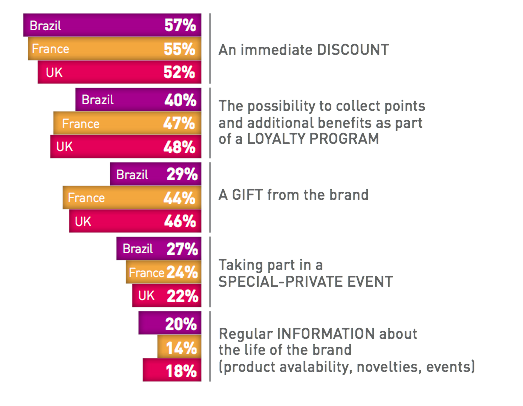By adaptive - June 10th, 2013
Individuals now have the power to influence how a brand is perceived in the market place. Cultivating your advocates is a vital part of brand development and longevity.
Looking after your advocates is a mantra that brand development specialists have been preaching for the past few years. As social media has evolved, the power that consumers now have literally in the palms of their hands have taken on a whole new meaning when brand development is considered.
Cultivating conversations is now a core component of every marketing message, as touch points become increasingly personal. “Out with the old and in with the new,” says leading mobile commerce developer Gemalto. “The ‘old school’ sledgehammer approach, which was all about shoving unwelcome messages at consumers, is broken.”
“This traditional, one-way marketing doesn’t work anymore. Consumers are already bombarded with thousands of marketing messages on a daily basis but the majority of them are ignored,” writes Scott Goodson, founder of StrawberryFrog, the world’s first cultural movement agency and author of Uprising.
And the conversations that are taking place are not surprisingly going mobile. The tablet PC and more importantly the smartphone deliver a platform that brand advocates are adopting to shout about the good – and the bad – when it comes to their brands they interface with.
It is important though, to tread carefully when using mobile platforms for brand advocacy development, as it’s all too easy to return to the old broadcast models, when opt-in choices are now vital to get right if positive brand advocacy is to result. Seth Godin insightfully said: “Permission based marketing builds trust and – ultimately – profits.”
Gemalto continued: “Start the conversation by asking people for their permission (opt-in). This lays the groundwork for personal, relevant and valuable communication between people and marketers. It also creates the expectation among people who have opted-in to receive brand messages that brands are prepared to engage in an ongoing dialogue in which they both listen intently and answer back.”

Gaining brand loyalty has a number of strands that come together across the social media networks. Often cited is the driver of promotions, discounting and gifts that are behind the uptick that brands see on their Twitter feeds and their Facebook pages in particular. This isn’t a manipulation of the consumer, but an appreciation of their propensity to gravitate towards a brand that offers immediate gratification in some way. And of course if this is well received, these consumers will communicate this to their connections over social media.

Research by PunchTab has revealed that mums are a huge market when it comes to brand advocacy. Over 80% of those surveyed would respond positively to brands that offer incentives. Most respondents (73%) said they were interested in loyalty programs. “Moms are the most critical demographic segment for many brands,” stated Angela Sanfilippo, CMO at PunchTab. “They are the primary decision makers when it comes to household purchases, and influence $2.4 trillion in spend every year. Everyone wants to engage this audience segment. The question is: what motivates moms to take action? This study offers definitive evidence that providing moms with the right incentives can boost word-of-mouth and drive sales across a company’s entire brand portfolio.”
And brands have been quick to realise that in an environment dominated by media messages, data overload and rising social media usage - smart phones users spent nine hours six minutes using social media networks each month according to Nielsen – message have to be relevant and well-targeted to cut though the fog of data that now surrounds each consumer.
The closing statement from Gemalto is telling for all brands struggling to understand their customers within the context of social media and how this impacts on brand advocacy: “Technology is getting smarter, but people are also becoming more important. At one end of the spectrum, companies are building the capabilities to intuit people’s intent. At the other end of the spectrum, people — empowered by their personal mobile devices — want a greater say in their experiences and demand relevance in their communications.”
The science of brand advocacy is developing, as corporations being to learn more about how their customers’ behaviour is changing because of the influence social media is having upon them. The exchange of positive sentiment isn’t free. Brands that use various forms of promotional mechanics such as discounting or coupons have quickly learnt this. The users of social media are not altruistic. A bargain has to be struck with these groups in order to gain their trust and ultimately their patronage.
Next Reads
June 2014, New York
Become a social business: For superior marketing response, sharper corporate decision-making, enhanced innovation and a happier, more loyal customer
Brochure Programme